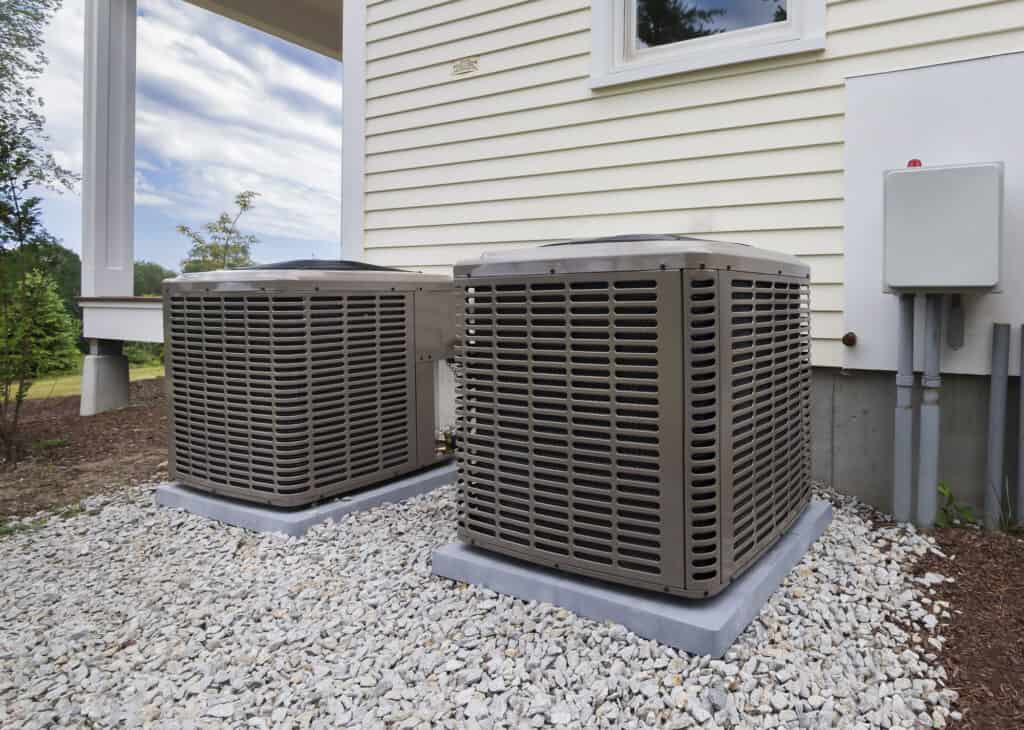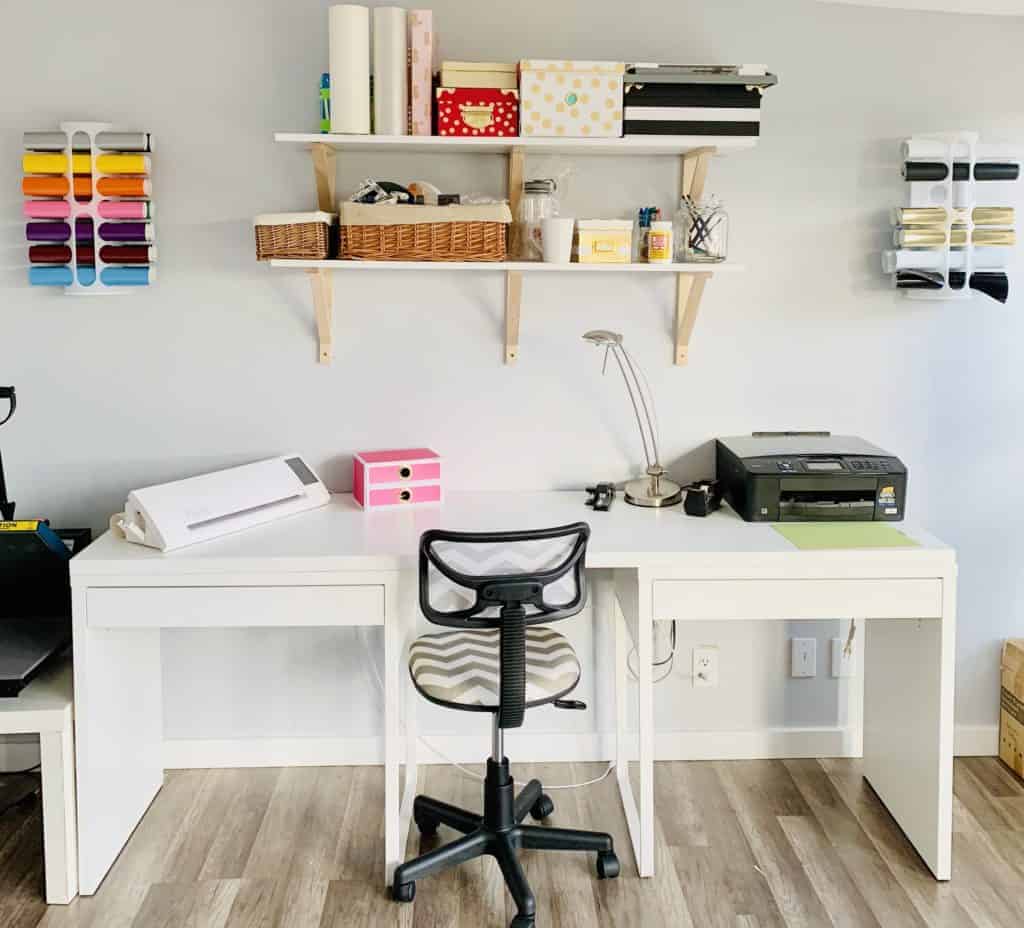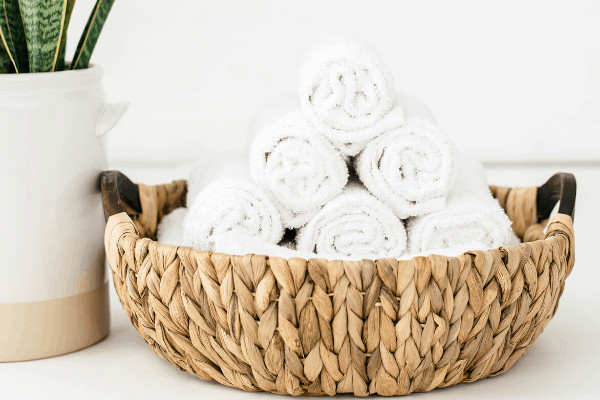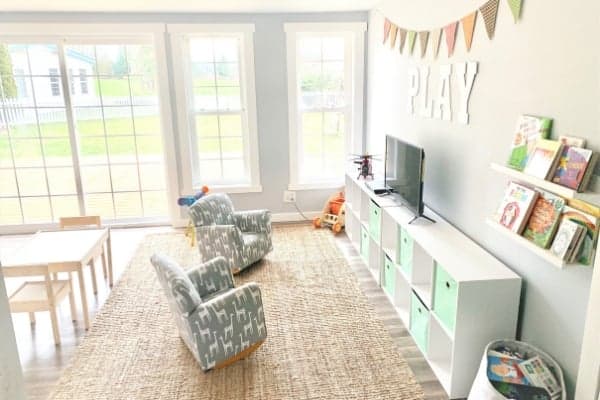Our homes are more than just buildings. They are special places where we find comfort and safety; keeping them in top condition is key to enjoying them thoroughly. This means more than just fixing things when they break. It means taking smart, small steps that prevent problems.
Good home care helps your systems last longer. It also saves you money on energy bills and avoids costly repairs. Most importantly, it gives you peace of mind.

In this guide, we will show you how to master home maintenance. We will cover vital tasks like keeping your heating and cooling systems running well. For example, a Paragon home furnace tune-up is a key part of this process. We will also explain how to protect your valuable home investments with warranties. By the end, you will have a clear plan to keep your home safe and comfortable all year.

The heating, ventilation, and air conditioning (HVAC) system is the heart of your home’s comfort. It works tirelessly to keep your indoor environment pleasant, regardless of outside weather. However, it requires consistent care, like any complex machinery, to perform optimally. Prioritizing preventative maintenance for your HVAC system is not merely about comfort; it’s about safeguarding your health, ensuring energy efficiency, and extending the lifespan of a significant home investment. A well-maintained system operates more reliably, contributing to a stable and comfortable home climate throughout the year.

What is an HVAC Tune-Up and Why is it Crucial?
An HVAC tune-up, particularly for your furnace, is a thorough inspection and cleaning process by a qualified professional. It’s designed to ensure every heating system component is functioning correctly and efficiently. During a typical furnace tune-up, a technician carefully examines the heat exchanger for cracks, cleans the burners, and inspects the ignition system. They will also check and tighten electrical connections, lubricate moving parts to reduce friction and wear, and test safety controls to prevent potential hazards like carbon monoxide leaks. Airflow and gas pressure are calibrated for optimal performance, and the thermostat is checked for accuracy.
The importance of this service cannot be overstated. A tune-up identifies minor issues before they escalate into major, costly repairs. It ensures your system operates at peak efficiency, directly translating to lower energy consumption and reduced utility bills. This proactive approach helps to prevent unexpected breakdowns, especially during the coldest months when your furnace is working hardest. By maintaining your system, you’re not just ensuring comfort; you’re actively contributing to the safety and efficiency of your home.
Key Benefits of Regular HVAC Servicing
Investing in regular HVAC servicing yields many benefits that impact your wallet and your peace of mind. One of the most significant advantages is the potential for substantial cost savings. Regular furnace tune-ups, for instance, can significantly improve energy efficiency, leading to noticeable reductions in your monthly utility bills. Studies indicate that routine furnace maintenance and tune-ups can reduce energy costs by 10% to 12%. This efficiency gain comes from ensuring all components are clean, calibrated, and working harmoniously, preventing the system from overworking to achieve desired temperatures.
Beyond immediate savings, consistent maintenance is crucial in extending the lifespan of your heating and cooling equipment. Just as regular oil changes prolong a car’s engine life, routine inspections and adjustments help your furnace and AC unit last longer. This means delaying the need for expensive system replacements, which can be a considerable financial burden. Moreover, regular servicing minimizes the likelihood of unexpected breakdowns, saving you from the inconvenience and expense of emergency repairs. Technicians can spot wear and tear or minor malfunctions early, addressing them before they cause catastrophic failures.
Improved indoor air quality is another vital benefit. During a tune-up, filters are checked and replaced, and internal components are cleaned, reducing the circulation of dust, allergens, and other airborne contaminants throughout your home. Lastly, and often overlooked, regular maintenance is frequently a requirement to maintain your manufacturer’s warranty. Neglecting scheduled servicing can void your warranty, leaving you responsible for the full cost of repairs that would otherwise be covered.
DIY vs. Professional Home Maintenance Services for HVAC
When it comes to HVAC maintenance, homeowners often wonder what they can safely and effectively handle themselves versus what requires professional expertise. Several valuable DIY tasks can contribute to your system’s health and efficiency between professional visits. Regularly changing your air filters, for example, is critical. A dirty filter restricts airflow, forcing your system to work harder and consume more energy. We recommend checking your filters monthly and replacing them every 1-3 months, especially if you have pets or allergies. Keeping the area around your outdoor unit clear of debris, such as leaves, grass clippings, and overgrown shrubs, is also essential for proper airflow. Ensuring that all vents are unobstructed by furniture or drapes helps distribute conditioned air efficiently.
However, the more intricate aspects of HVAC maintenance are best left to licensed professionals. A furnace, in particular, involves complex electrical components, gas lines, and combustion processes that pose significant safety risks if mishandled. Attempting to clean internal components, calibrate gas pressure, or inspect the heat exchanger without specialized training and tools can lead to dangerous situations, including gas leaks, carbon monoxide poisoning, or electrical fires. Professionals possess the diagnostic equipment to accurately assess system performance, identify hidden issues, and make precise adjustments that optimize efficiency and safety. Their expertise ensures that all safety protocols are carefully followed, protecting your home and family. While DIY efforts are commendable for basic upkeep, the specialized knowledge and safety considerations involved in a comprehensive HVAC tune-up necessitate the skills of a certified technician.
Protecting Your Investments: The Role of Home and Appliance Warranties
Our homes are filled with significant investments, from the structure to the major appliances that make modern living convenient. Protecting these investments against unexpected failures is a cornerstone of sound home management. Warranties serve as a critical layer of financial protection, offering peace of mind by covering the costs of repairs or replacements for covered items. Understanding the nuances of these agreements is essential for maximizing their benefits and ensuring you’re adequately protected when issues arise.

Understanding Manufacturer vs. Extended Warranties
When you purchase a new HVAC system or major appliance, it typically comes with a manufacturer’s warranty. This standard coverage usually lasts for a specific period, often between one and ten years, and covers defects in materials or workmanship. It’s designed to protect you from faults that originate during the manufacturing process. The scope of coverage can vary, but it generally includes parts and sometimes labor for a defined duration.
Beyond the initial manufacturer’s warranty, homeowners often can purchase an extended warranty, sometimes called a home warranty or service agreement. Third-party providers typically offer these plans and kick in after the manufacturer’s warranty expires. They aim to provide continued protection against mechanical breakdowns due to normal wear and tear. Extended warranties can be particularly valuable for systems like HVAC, which are complex and costly. For those seeking a deeper dive into these options, exploring resources on extended HVAC peace of mind can provide valuable insights into securing your home’s systems for the long haul. While manufacturer warranties are inherent to the product, extended warranties offer an additional layer of protection, allowing you to budget for potential future repairs rather than facing significant, unexpected expenses.
How Maintenance Impacts Your Warranty Coverage
A critical aspect of warranty protection, especially for complex systems like your furnace, is understanding the role of maintenance. Many manufacturer warranties state that regular professional maintenance is a prerequisite for coverage. If your furnace experiences a breakdown and it’s determined that a lack of proper servicing contributed to the failure, your warranty claim could be denied. These “neglect clauses” are designed to encourage homeowners to properly care for their equipment, as consistent maintenance reduces the likelihood of premature failures.
Keep meticulous records of all professional service appointments to ensure your warranty remains valid. This includes invoices detailing the work performed, the date of service, and the name of the technician or company. This documentation proves that you have adhered to the manufacturer’s maintenance requirements. If you ever need to file a warranty claim, having these records readily available can streamline the process and prevent disputes. Without this proof, you might face the full cost of a significant repair or replacement, even if the issue would typically be covered. Therefore, viewing regular furnace tune-ups not just as a cost, but as an investment in preserving your warranty, is a smart long-term strategy for protecting your home’s heating system.
Beyond the Basics: Specialized Home Maintenance Services
While HVAC care and warranty management are crucial pillars of home maintenance, a holistic approach extends far beyond these essential areas. Maintaining the integrity of your home’s various systems and ensuring a healthy indoor environment contribute significantly to your property’s value and your family’s well-being. Many specialized services exist to address the less obvious yet equally important aspects of home care that often get overlooked in day-to-day routines.

Expanding Your Home Care Checklist
To safeguard your home, we encourage expanding your maintenance checklist to include several often-neglected areas. Duct cleaning, for instance, is a service that can dramatically improve indoor air quality. Over time, dust, allergens, pet dander, and even mold can accumulate within your home’s ductwork, circulating throughout your living spaces every time your HVAC system runs. Professional duct cleaning removes these contaminants, leading to cleaner air and potentially alleviating allergy symptoms. Furthermore, leaking ducts can waste a significant amount of the heat your furnace creates—up to 30%—making duct sealing and cleaning a smart move for energy efficiency.
Beyond air quality, regular plumbing inspections are vital for preventing costly water damage. Technicians can identify small leaks, corroded pipes, or potential blockages before they become significant issues. Similarly, electrical system checks ensure that wiring is safe, outlets are functioning correctly, and your home’s electrical capacity meets your needs, preventing fire hazards and system overloads. For homes in areas prone to flooding, testing your sump pump annually is non-negotiable to ensure it will activate when needed. These specialized services, while not always top-of-mind, play a critical role in your home’s overall health, safety, and efficiency.
The Unseen Chore: Professional Garment and Fabric Care
Maintaining a home extends beyond its physical structure and mechanical systems; it also encompasses the care of its contents, including our personal belongings. In addition to furnace tune-ups, preventative care and professional expertise apply equally to garment and fabric care. Just as we rely on specialists for HVAC maintenance, delegating specific fabric care tasks to professionals can preserve clothing longevity, prevent damage, and save valuable time.
Consider the effort involved in maintaining a crisp, clean wardrobe. Utilizing a VIP Cleaners dress shirt laundry home maintenance is an excellent example of how specialized services can improve your daily life. These services ensure your garments are impeccably cleaned and pressed and employ techniques that are gentle on fabrics, helping them last longer. Beyond daily wear, professional cleaners are adept at stain removal, fabric preservation, and handling delicate materials that conventional home washing methods might damage. This extends to larger household items like bedding, draperies, and upholstery, which can accumulate dust and allergens over time. Regular professional cleaning of these items contributes to a healthier indoor environment. It keeps your home looking its best, demonstrating that comprehensive home care touches every aspect of our living spaces.
Creating a Year-Round Home Maintenance Schedule
Effective home maintenance isn’t a one-time event; it’s an ongoing commitment best managed through a structured, year-round schedule. Proactive planning allows you to spread tasks throughout the year, preventing the overwhelming feeling of a long to-do list and ensuring critical systems receive attention before they become problematic. A comprehensive homeowner checklist, organized by season, empowers you to stay on top of your property’s needs, contributing to its longevity, efficiency, and comfort.

A Seasonal Checklist for Comprehensive Home Maintenance Services
To simplify your home care, we’ve outlined a seasonal checklist incorporating essential tasks, including the optimal timing for your furnace tune-up:
- Spring (March – May):
- AC Tune-Up: As the weather warms, schedule an air conditioning tune-up to prepare for summer. This ensures efficient cooling and prevents breakdowns when demand is high.
- Gutter Cleaning: Clear out any debris accumulated over winter to ensure proper drainage and prevent water damage to your roof and foundation.
- Window Screen Repair: Inspect and repair any tears or holes in window screens to keep insects out.
- Check for Exterior Damage: Walk around your home and inspect the roof, siding, and foundation for any winter-related damage.
- Summer (June – August):
- Deck Maintenance: Clean and seal your deck or patio to protect it from the elements and extend its life.
- Check Detectors: Test smoke and carbon monoxide detectors, and replace batteries as needed.
- Exterior Painting Touch-Ups: Address any peeling paint or minor exterior touch-ups to protect surfaces and maintain curb appeal.
- Inspect Plumbing: Check for leaks under sinks and around toilets.
- Fall (September – November):
- Furnace Tune-Up: This is the prime time for your furnace tune-up! The best time is in early fall, typically in September or October, before the heating season begins in earnest. While some recommend a tune-up every two years, others suggest yearly to every five years, depending on usage and age. Our experience shows that annual checks are ideal for optimal performance and longevity.
- Window Sealing: Check windows and doors for drafts and apply weatherstripping or caulk to improve insulation.
- Chimney Sweep: If you have a fireplace, schedule a chimney cleaning to remove creosote buildup and prevent chimney fires.
- Irrigation System Winterization: Drain and shut down your sprinkler system to prevent pipes from freezing and bursting.
- Winter (December – February):
- Pipe Insulation: Ensure exposed pipes in unheated areas (like basements or crawl spaces) are insulated to prevent freezing.
- Check for Ice Dams: Monitor your roof for ice dams, which can cause water to back up and damage your roof and interior.
- Test Generator: If you have a backup generator, test it regularly to ensure it’s ready for power outages.
- Monitor Indoor Humidity: Use a humidifier if indoor air becomes too dry, impacting comfort and health.
By following this seasonal approach, you can ensure that each component of your home receives the attention it needs, when it needs it, leading to a more comfortable, efficient, and resilient living space.
Frequently Asked Questions about Home Maintenance
Home maintenance often sparks common questions, especially for those new to homeownership or looking to optimize their care routines. We aim to clarify some of the most frequent inquiries to help you make informed decisions about your property.
What is the difference between a tune-up and a repair?
This is a fundamental distinction in home maintenance. A tune-up is a proactive, preventative service. It involves inspecting, cleaning, lubricating, and calibrating various system components (like your furnace or AC) to ensure they’re running efficiently and safely. The goal of a tune-up is to prevent problems from occurring, extend the system’s lifespan, and optimize its performance. Think of it as a routine check-up for your car.
A repair, on the other hand, is a reactive service. It addresses an existing problem or breakdown within a system. When something is no longer functioning correctly, a repair involves diagnosing the issue and fixing or replacing the faulty part. For example, if your furnace stops producing heat, that requires a repair, whereas a tune-up aims to prevent that heat loss in the first place. A tune-up is about prevention and optimization, while a repair is about correction and restoration.
How does regular maintenance actually save money?
Regular maintenance, particularly for your HVAC system, saves money significantly. Firstly, it dramatically improves energy efficiency. A well-maintained furnace or AC unit doesn’t have to work as hard to heat or cool your home, leading to lower energy consumption and reduced utility bills. As mentioned, tune-ups can save you up to 12% on heating costs alone.
Secondly, maintenance helps in preventing costly repairs. By identifying and addressing small issues like worn-out belts or minor electrical problems early on, you avoid them escalating into major breakdowns that require expensive emergency services or component replacements. Routine furnace maintenance and tune-ups are proven to minimize costly breakdowns.
Thirdly, consistent care extends the lifespan of your appliances. When systems are regularly cleaned, lubricated, and calibrated, they experience less wear and tear, meaning you won’t have to replace them as frequently. This delays a significant capital expenditure. Finally, keeping your systems in good working order prevents emergency service fees, often higher for urgent, after-hours calls. Maintenance is an investment that pays dividends in efficiency, longevity, and avoided expenses.
Can I perform most home maintenance tasks myself?
The extent to which you can perform home maintenance depends mainly on your skill level, the tools you possess, and the inherent risks involved. Many basic maintenance tasks are well within the capabilities of most homeowners. For example, changing air filters, cleaning gutters, testing smoke detectors, and ensuring good drainage are all excellent DIY activities. These tasks contribute significantly to your home’s upkeep and can save you money.
However, specific tasks, especially those involving complex systems like HVAC, electrical wiring, or significant plumbing, are best left to professionals. These areas often require specialized tools, in-depth knowledge, and a keen understanding of safety protocols. For instance, attempting to service a gas furnace without proper training can lead to dangerous situations like carbon monoxide leaks or gas explosions. Professionals are trained to identify subtle issues, adhere to safety standards, and perform precise adjustments that homeowners might miss. While we encourage homeowners to be actively involved in their home’s care, recognizing the limitations of DIY and knowing when to call in an expert is a crucial part of responsible homeownership.
Conclusion
Embracing a holistic approach to home maintenance is one of the smartest investments you can make as a homeowner. From the critical care of your HVAC system, ensuring your furnace runs efficiently and safely, to the strategic management of warranties that protect your major appliances, every effort contributes to your property’s long-term value and comfort. We’ve explored how proactive measures, such as regular furnace tune-ups, not only save you money on energy bills and prevent costly repairs but also extend the lifespan of your systems and maintain warranty compliance. Beyond the mechanical, we’ve touched upon the broader spectrum of home care, from duct cleaning for improved air quality to professional garment care that preserves your personal belongings.
By integrating seasonal checklists and understanding the distinction between DIY efforts and professional necessities, you empower yourself to create a safe, efficient, and comfortable living environment for years to come. A well-maintained home isn’t just a point of pride; it’s a foundation for peace of mind.
For professional assistance with your HVAC needs and to ensure your home’s systems are running at their best, consider contacting experts in your area. For those in Chandler, Arizona, and surrounding communities, exploring comprehensive HVAC repair and maintenance services is a step towards securing your home’s comfort and efficiency. Learn more about HVAC services in Chandler, AZ.





